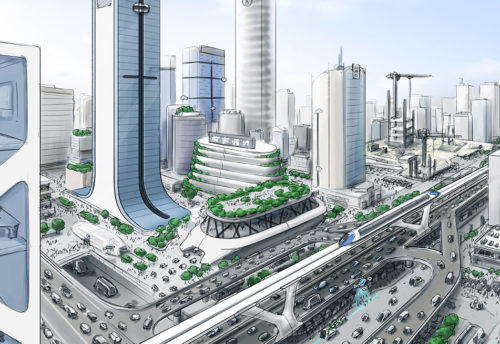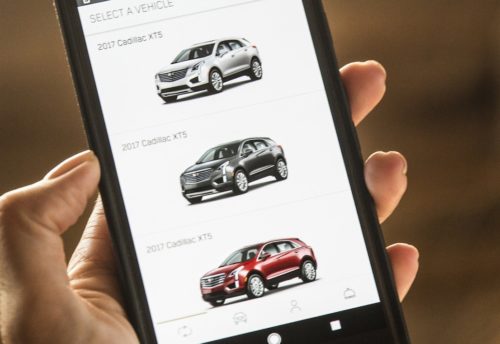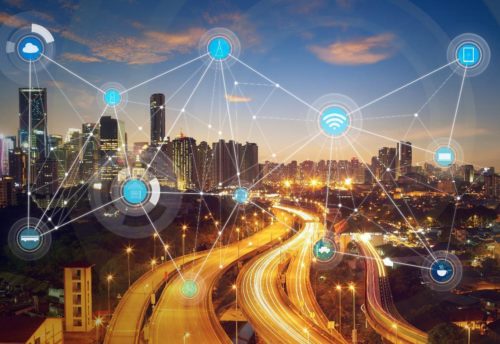
From 30 miles per day to 30 steps:
Thoughts about transportation while sheltering in place
As a result of the movement restrictions imposed because of the pandemic, my 30-mile average daily travel around the Bay Area and the monthly airline trips have all become a 30-step walk to my home-office for video calls. While we’re all eagerly anticipating the lifesaving health outcomes from the measures taken towards the pandemic, the retail, travel, and hospitality industries are reeling. Over the past two weeks, airlines have reduced their flights by 40-50%.
We are starting to see the impact on mobility services of the changes that populations are making to their daily routines and activities. This crisis is definitely benefiting goods delivery (Instacart traffic was up 10x last week), may be neutral to slightly positive to food delivery (Uber reported that UberEats is holding up well), and devastating to ride-hailing (Uber reported that 10% of all ride-hailing rides were to and from airports, and in Seattle ride-hailing rides are down 40-50% within two weeks since the outbreak ), along with declines in micromobility and public transportation. As we contemplate the future of urban transportation with the introduction of new technologies and services, it is important to consider whether the shifts occurring as a result of the pandemic will have a long-lasting impact on vehicle ownership, on-demand mobility services, and public transportation.
There is no question that global economies will experience a recessionary period once this pandemic is over. The pandemic’s unknown duration makes prognostications at this point highly suspect. Looking at the economic activity after the last “SARS recession” could be a little instructive but the scale was orders of magnitude smaller. Based on what is being reported and assuming that the drastic measures taken by governments around the world start to get relaxed over the next 4-8 weeks, some economies could experience a short (maybe 6-month?) recession while others one that will be deep and prolonged.
This pandemic is teaching us many lessons about preparedness, ethics, transparency, social interactions, sustainability, and globalization, to name but a few topics. It is important to also start asking how urban transportation could change in the post-pandemic environment. We should consider this question with a 5+ year horizon rather than the short-term view that’s common after various natural or man-made disasters. As I’ve been preparing for the publication of my new book Transportation Transformation, while advising our corporate partners all of which are impacted by the pandemic, I have been considering the following issues:
- Will urbanization continue at the rates that have been predicted by organizations such as the UN or will the migration patterns change? Depending on how long the pandemic lasts, and the potential fallout, migration patterns could change, with the urbanization pace slowing down, at least for a few years, as people digest the impact of COVID-19. Will megacities, and particularly vertical megacities, suffer more than smaller-size cities because of their population densities? For example, New York today has more cases than any other city in the US. But Singapore and Hong Kong, two other vertical cities, offer successful strategies of dealing with COVID-19.
- Will our work and personal practices and daily routines, including our mobility preferences, be forever altered because of what we’re currently going through due to the pandemic? The demand for on-demand mobility services, including ride-hailing and micromobility, will start to increase again once the measures to protect against the pandemic are lifted. However, a prolonged recession will impact how high demand will go and whether it will reach the pre-crisis levels. Stock traders realize that. For example, startups have already started laying off employees and because of the capital intensity of their business models, private companies offering mobility companies may find themselves in immediate need of cash that will not be available at pre-crisis terms, as Lime is finding out. Many of these employees belong to a younger demographic and were active users of mobility services. If unemployment remains high for the medium-term then increasing use of on-demand mobility services will have to be based on more than convenience, as it is today. Over the last month Uber’s stock price declined by 36% and Lyft’s by 38.5%. A few of the transportation executives our firm is working with believe that consumers will turn back to using extensively their privately-owned vehicles that allow them to better control the transportation environment. But I also worry that if OEMs interpret this as a long-term signal, combined with the cuts they will may decide to make to their next-generation mobility budgets due to the economic downturn, they run the risk of missing out on the opportunity of new mobility over the next 10-20 years.
- How will ridesharing and carpooling be impacted in the long term? During these days of imposed social distancing, mobility services companies are discouraging ridesharing and consumers are avoiding carpooling. It is not clear that consumers will return to ridesharing in exchange for reduced fares.
- How will public transportation systems be impacted? Cities, particularly here in the US, have a bigger problem. With the increasing popularity of on-demand mobility services, they saw a significant decrease in public transportation ridership. Social distancing will decrease the passenger density on these systems, but that density is necessary for these systems to meet their financial goals. Cities are constantly disinfecting their buses, trains, subways, and light rail cars, but the public is still worried about getting infected. As a result ridership is declining and losses mount. Longer term, the cities will have to find a way to reassure the public about how clean the public transportation system is and remains. Will the public accept to pay more taxes for transportation that assures less crowded modalities?
- Will telecommuting 100% of the time be possible? A study showed that 3.6% of the US workforce currently works from home, and 56% of the workforce could do from home some aspect of their work. Telecommuting doesn’t have to be done from home but from facilities that are closer to home. How high can the percentage of telecommuters go and how expensive could such a transition be for communication infrastructure providers (telcos, ISPs) and for corporations whose employees work remotely (paying for VPN tools, internet access, leasing remote space, etc.) Permanently increasing telecommuting has the potential of altering local and long-distance transportation patterns. For example, it will alleviate morning and evening rush-hours and address the acute congestion and associated pollution problems that certain metropolitan areas face already. It also has the potential to permanently alter the commercial real estate landscape.
- On-demand goods delivery could become a more important and profitable business than passenger transportation. Ecommerce and goods delivery are emerging as clear winners of this crisis. Amazon announced it will hire one hundred thousand warehouse and delivery workers to address the surging demand for its services, whereas Instacart announced that it will hire three hundred thousand shoppers. As more people are getting used to the practice of ordering from home because of ongoing mobility restrictions that may continue for several weeks, they may turn this into a permanent practice (in the process also becoming used to cashless and contactless commerce). Such a practice could definitely reduce certain types of personal trips, for example, trips to supermarkets, big box retailers, etc., but would increase traffic of delivery vehicles some of which belong to fleets, not just Amazon, UPS, and USPS, but also many vehicles that will belong to the individuals who will start driving for Instacart, Doordash, and other such services. The pandemic can also act as a catalyst for terrestrial and aerial autonomous vehicles used for short- and long-haul goods delivery, not only because they alleviate the need for additional drivers but also because they enable us to extend contactless commerce one step further .
- What will be the impact on globalization and the global supply chains? Transportation and logistics are the glue to the “long” supply chains enabled by globalization. The situation created by the pandemic is making us realize the problem with these types of supply chains. Among the automotive industry companies that my firm advises, there are already discussions about the importance of “short” supply chains with products being manufactured much closer to the places where they are consumed. Technologies such as additive manufacturing, robotics, and autonomous vehicles will be key in enabling the development of such supply chains even in areas with high cost of living. The major logistics companies may already be rethinking their clients’ supply chains, the delivery routes they have to utilize, and the delivery methods they will employ in the future. Cross-border shipping needs to be totally reimagined.
- Will this crisis convince mobility services companies to convert their drivers to employees and provide them with health care, among other benefits? The restrictions and lifestyle changes imposed on populations are having a big impact on gig workers providing passenger transportation. It is not just that as gig workers, they don’t receive any health benefits, even though companies like Uber, and Lyft have announced emergency assistance policies. The reduced demand for on-demand passenger transportation services is making difficult if not impossible for drivers to make ends meet. Many are starting to realize the downside of gig economy jobs that are highly dependent on the state of the economy. The stimulus bill moving through the US Congress makes unemployed gig workers eligible for federal assistance for up to four months. While helpful for this crisis, it does not solve the benefits problem these workers need for the long-term.
- Will the pandemic make us understand the impact our current transportation habits are having on the environment? The reduction in industrial activity, traffic, airline flights enable us to realize for the first time in such a global scale the impact our actions are having on pollution. We will have to see whether the data we are getting will lead us to more strongly consider transportation solutions that lead to sustainable mobility that respect the environment and the health of the world’s citizens.
- Will people change the way they socialize and entertain themselves (movies, theater, sports events, restaurants, bars, …)? Will home entertainment around streaming movies, music, video games become the norm?
The coronavirus crisis will eventually subside. But it’s not at all certain how consumer transportation will look within 12 months based on the economic environment we will be operating in at that time, particularly if government measures around the world persist for more than a couple of months and cause longer term recessions. Automakers, on-demand mobility services companies, and cities are starting to rethink how this will impact the transportation transformation we’ve been envisioning.




Leave a Reply